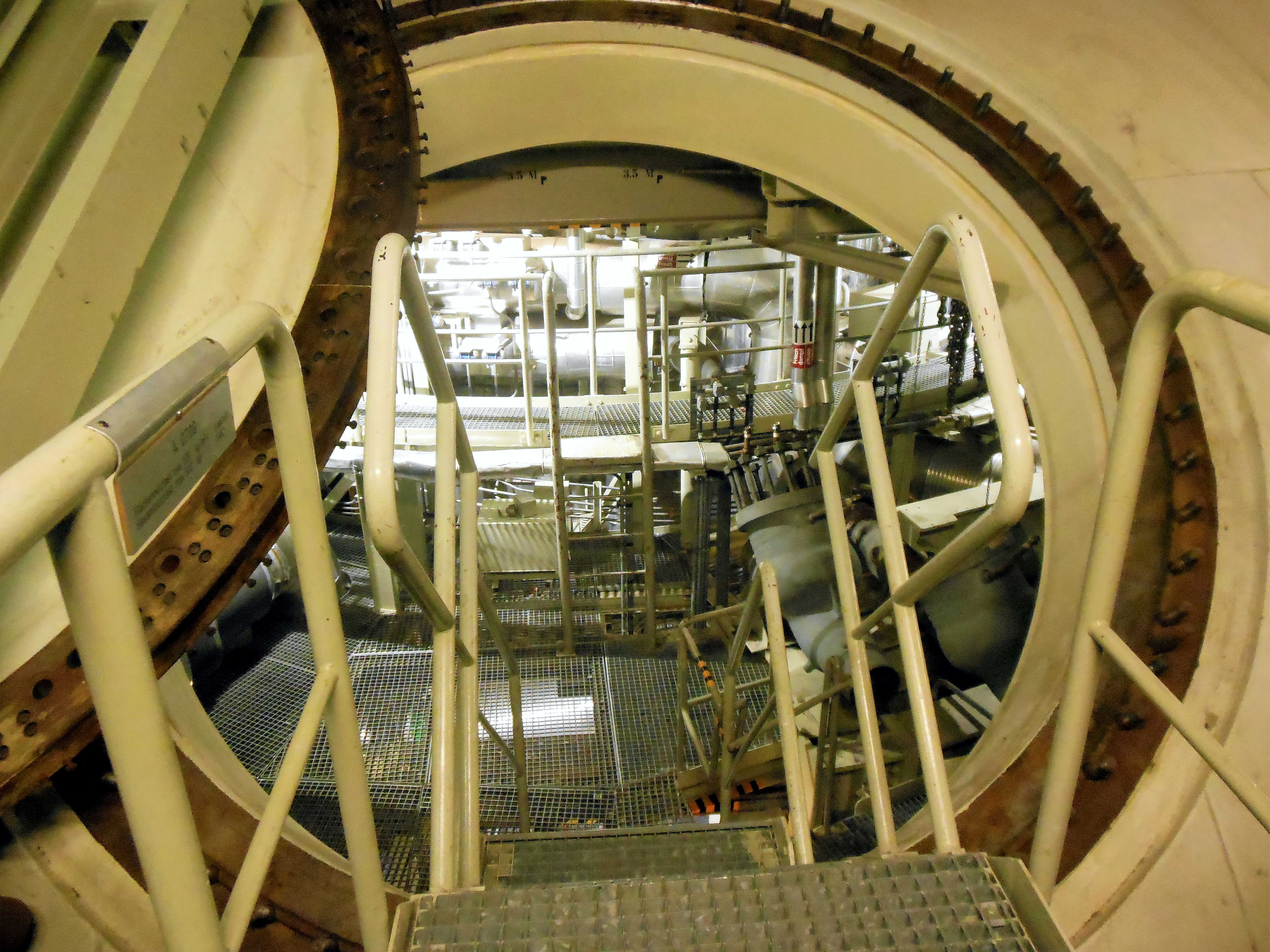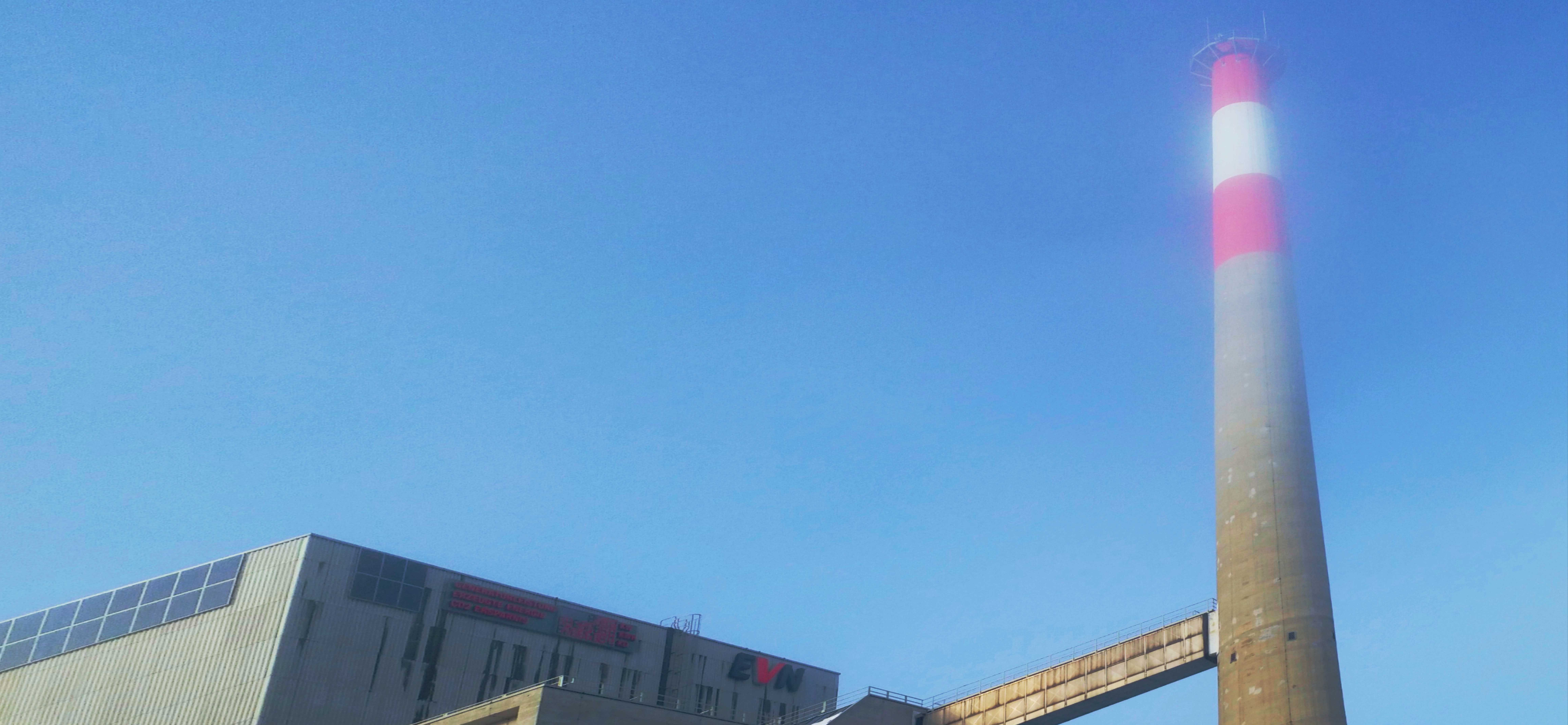GeoSphere Austria uses the Lagrangian particle dispersion model FLEXPART (FLEXible PARTicle dispersion model). In this type of dispersion model, a pollution cloud is represented by individual particles. A certain number of particles are released at the source location and are individually transported by the airflow. For this one requires three-dimensional wind fields as meteorological input data. The mixing of the pollutants with surrounding air (diffusion) through thermal and mechanical turbulence in the atmosphere is accounted for by adding a random component to the movement of each particle. Other processes, such as the deposition of pollutants on the ground due to settling and washing out by rain or snow, as well as radioactive decay, can also be simulated.
Nuclear Incidents
At GeoSphere Austria, various methods are used to detect nuclear explosions and to assess the risk in the event of a nuclear incident.
In the event of an accident at a nuclear power plant, radioactive substances can be released into the air. These substances are carried by the wind and can settle on the ground after some time or be washed out by rain or snow. Depending on the weather conditions, radioactive substances can spread across large areas and even across national borders. With the help of special dispersion models, the transport of radioactively contaminated air masses can be predicted. This provides crucial information before the radioactive cloud arrives and before the first measurement results from the early radiation warning system are available. GeoSphere Austria supports the national crisis management (SKKM) during nuclear incidents by providing dispersion calculations and meteorological data on demand. These are essential for providing the public with the best possible information and implementing appropriate protective measures.
In addition to forward modelling, which calculates where a radioactive cloud will move from a certain point in the next few hours or days, dispersion models can also be used for the reverse case, for example to complement the global monitoring system for nuclear weapons tests. The Austrian National Data Centre based at GeoSphere Austria (NDC-AT) is involved in this system, which consists of sensors that measure vibrations in the ground (seismic), in the atmosphere (infrasound) and under water (hydro acoustics). Additionally exists a measuring network of radionuclide stations. These measurements make it possible to clearly determine the cause of the explosion and establish whether it has a nuclear background.
In addition to forward modelling, which calculates where a radioactive cloud will move from a specific point in the next hours or days, dispersion models can also be used for reverse scenarios. If elevated radioactivity is detected by the radiation early warning system, backward modelling can be used to calculate the possible origin of the radioactive particles. This allows the source area of the radioactive material to be determined and, for example, illegal nuclear tests or an unreported accident at a nuclear power plant to be detected.
The national emergency plan mandates that GeoSphere Austria provides weather data as input for various decision support systems used in national crisis management in the event of a radiological emergency. Additionally, the transport model TAMOS, developed by GeoSphere Austria, is available for predicting the movement of radioactive air masses. By considering general weather conditions and the forecasted weather development, TAMOS can estimate if, when, and where contaminated air masses will reach Austria and the likely exposure levels. The Department of Radiation Protection at the Federal Ministry for Climate Action, Environment, Energy, Mobility, Innovation, and Technology (BMK) can remotely start dispersion calculations via a dedicated user interface, selecting the location and strength of the release.
The results include graphical representations of the concentration clouds, wet deposition (the washing out of radionuclides from the atmosphere by rain or snow), and total deposition (wet deposition combined with the settling of pollutants on the ground due to sinking), as well as graphics showing the expected arrival times of the cloud. Before radioactive air masses reach Austria, these dispersion calculations provide critical input for assessing the situation and, if necessary, determining protective measures by the responsible radiation protection authorities.
GeoSphere Austria is one of ten designated centres worldwide for nuclear dispersion calculations, known as Regional Specialized Meteorological Centres (RSMCs), operating on behalf of the World Meteorological Organization (WMO). In addition to Vienna, centres are located in Exeter (UK), Melbourne (Australia), Montreal (Canada), Obninsk (Russia), Offenbach (Germany), Peking (China), Tokyo (Japan), Toulouse (France) und Washington (USA).
In its role as a forward modelling centre, GeoSphere Austria is responsible for producing dispersion calculations during a nuclear crisis in Europe or Africa to support the meteorological services and authorities of the affected countries. Together with the centres in Germany, France, and the UK, GeoSphere Austria also assists in interpreting the model results by means of a jointly written text. The release data required for these calculations is provided by a requesting meteorological service or the International Atomic Energy Agency (IAEA). The 24/7 operational meteorological service at GeoSphere Austria uses a specially developed user interface to start the model calculations based on this data.
In both exercises and real events, up to ten regional centres initiate dispersion calculations, providing the same type of results in comparable formats. The ten centres use different dispersion models and meteorological input data from different weather models. GeoSphere Austria is the only regional centre using the FLEXPART dispersion model. By comparing the results of the different dispersion models, some estimate of the uncertainty can be made.
The Comprehensive Nuclear-Test-Ban Treaty Organisation (CTBTO) operates an international monitoring system with more than 300 stations distributed around the globe. Four different technologies are applied: seismics, hydroacoustics, infrasound and radionuclides. These technologies can be used to measure ground, atmospheric and underwater vibrations as well as some radionuclides, provided they exceed a certain threshold.
Monitoring compliance with the nuclear-test-ban treaty
Many countries are legally committed to refraining from nuclear weapons tests. A global monitoring system is in place to check whether states are honouring this commitment. All countries that have signed the treaty can access the system’s data to ensure that the agreement is upheld. In Austria, the National Data Centre, located at GeoSphere Austria, carries out this verification. The monitoring system is based on seismic measurements, which, besides detecting earthquakes, can also reveal explosions during nuclear tests. In addition, GeoSphere Austria is one of the specialised regional centres from which the organisation can request meteorological dispersion calculations to verify the nuclear test ban treaty. These calculations can be used to determine the source area of the radiation in the event of conspicuously increased radioactive radiation measurements.
Additionally measurements of radionuclides support the source-identification process. If increased radioactivity is observed anywhere on earth, the CTBTO can request dispersion calculations from GeoSphere Austria as part of the WMO-CTBTO atmospheric backtracking response system. These support the localisation of the area of origin and the identification of possible sources. By combining these different technologies, the source term can be estimated and the release location determined with a high degree of accuracy.
An early warning system has been set up at the National Data Centre to collect and evaluate relevant seismic data and products from the International Data Centre of the CTBTO immediately in the event of an incident. The responsible employee is informed of suspicious events by text message. In case of a critical event, a report is sent to the national authorities after verification work was performed.
All events in the series of tests conducted by the Democratic People’s Republic of Korea (widely known as North Korea) were analysed by our National Data Centre. Starting in 2006, six suspicious events were observed at the Punggye-ri test site in the province Hamgyŏng-pukto. The events were registered worldwide by the CTBTO seismic stations, but also by stations of the earthquake service. The strongest and last event in this test series to date took place on September 3rd, 2017.


